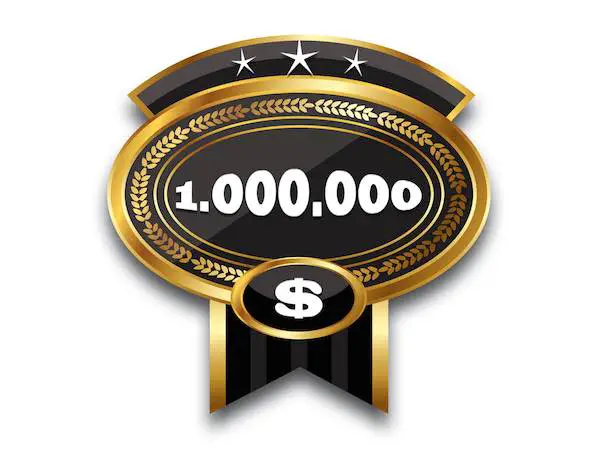Your TSP is one of the largest assets you have as an available tool to help you retire with dignity and independence. Over the next few weeks, I’ll be doing a series of pieces that dive deep into the TSP to help you maximize your results. We’ll be looking at the TSP as a vehicle, its investments, its features, how to best utilize it, mistakes to avoid, and a variety of considerations to make as it pertains to planning your future. Some of these might seem obvious, others might seem overlapping. Just know that each are critical pieces of maximizing your success.
Considerations Regarding Doubling Your TSP Account
Before we go further, let me say this about “doubling your TSP.” The larger your TSP value, the harder it will be to double. Growth comes from contributions, matches and smart investing.
If your balance is $100K and you’re contributing the maximum into your TSP, you might well double your account simply with contributions. But if your account values are $500K – $750K+, it makes this task one that requires more strategy and tactics. One variable that you’ll have going for you is compounding interest. Earning 6% return on an $850K TSP yields you more growth than the same 6% on a $400K TSP. This characteristic is something you can use to your advantage, like a snowball effect.
Growing your portfolio might seem like a “set it and forget it” task, but the reality is that the markets are constantly changing, turning winning investments into losing ones, moderate performing investments into big winners, or all flipping upside down altogether if the markets roll causing the majority of investments to be losers. The same investments that earned you growth for the last 3 years may cause your accounts to decline. The same compounding effect of earning more from a higher starting balance in your TSP also makes you susceptible to larger amounts of losses if the markets have negative returns.
Most Impactful Factors to Help You Double Your TSP Account
In guiding thousands of federal employees over the years, we’ve come up with a list of the most impactful variables in helping you double your TSP account.
Contributions
If you’re still employed, the first thing you must do is to ensure that you’re contributing to your TSP. This might seem like a no-brainer, but if you’re a new fed, the auto-enrollment is 5%, a very recent change from the historical 3%. Your agency matches your 5% contributions, effectively allowing you to receive 100% return on the dollars you contributed. At a bare minimum, take advantage of this benefit. Don’t say no to free money!
We like to tell federal employees to start raising their TSP contribution amounts every time they receive a raise. Getting a raise is always nice and seeing an increase to your take home pay is rewarding, but instead of upgrading your lifestyle on an immediate basis, upgrade your TSP contributions by 1% each time you receive a raise (up to the maximum allowable, of course).
This is a simple but effective technique in getting more and more dollars flowing into your retirement account. You also continue reducing your overall taxes for that year.
Utilize the Roth TSP/IRA
This is a big one. Taxes are a major part of the planning done by wealthy families in the US, and for good reason. Taxes eat up a large part of someone’s money. Consider a Traditional TSP with $1M in it; if you were to distribute that account, you’d be left with around $700,000 if your marginal tax bracket is around 30%. The Roth TSP does mean that you pay the taxes now, but you’ll have the benefit of tax-free growth for the rest of time. The Roth TSP does not have income limitations like the Roth IRA does – so this is an incredible tool to diversify the taxability of your assets.
Diversifying your portfolio’s taxability is another critical element of proper investment management, just like diversifying your allocation. Other, more advanced techniques can be applied as well. Proper planning can lead to well-timed Roth conversions in IRAs, allowing you to compound your growth tax-free. You can also utilize the back-door Roth if earn too much income for Roth IRA contributions. We’re in a fairly low tax environment right now, and while I’m not pretending to speculate the future, let’s just say that most economists agree that taxes will likely not be dropping in the foreseeable future.
Already Maxing out your TSP?
You’re well on your way to becoming a TSP millionaire. If you cannot contribute more into the TSP, then consider investing in other platforms. Brokerage accounts can be created in a variety of registration types (individual, joint, Trusts, etc.), and have no contribution limits.
Yes, it’s true that they are not tax-sheltered like retirement accounts are (so capital gains become a factor), but it’s still a place where you can invest your money and grow it just like you do in your TSP. Remember, your entire portfolio is what counts, not just your TSP.
If your TSP account goes from $500K to $700K, but you also save and grow an individual or joint account from $100K to $300K during the same time, you still made it into the millionaires’ club. Left pocket versus right pocket – it doesn’t matter where the money is, so long as it’s invested properly given its taxability, time horizon, and ever-changing economic factors.
Staying Invested
As an investor, staying invested through turbulent times is one of the hardest things to do. As the markets become volatile, the tendency is for employees to move their money to the G Fund.
The problem is, do you know when the markets have hit the bottom of their prices and are rebounding back up? Research has been done by many economists on this: JPMorgan reviewed a 20-year period in the markets, which included roughly 5,000 days during which the stock market was open. They indicated that if you missed the 10 best days out of those 5,000, you’d have less than half in your portfolio had you been invested properly.
Think about how quickly you can keep yourself from achieving the growth in your TSP by making the wrong moves in your investments. Yet as human beings, we feel something when we log into our accounts and see that there was a drop in our TSP or other investment accounts.
In our experience, federal employees are generally more risk averse to begin with, and that can make sense when you’re sitting on a $1M+ portfolio. You’re afraid to lose that money in the markets. But $1M just doesn’t take you as far as it used too, especially not here where we are, right outside of Washington, DC.
Fight the urge to make changes to a more conservative portfolio simply because the markets are volatile. This fear induced paralysis can have a tremendous opportunity cost. It could mean that you have to work for longer or spend less in retirement. There’s something to be said about your overall stress levels as it pertains to volatile markets, but that’s for another time.
Let me be clear, I’m not telling you to go all the way aggressive either. This isn’t an allocation recommendation. It’s a strategy check. It’s a gut check. It’s an emotions check. The wealthiest investors in America have their portfolios managed in a controlled manner, with discipline, and with research. It’s critical that your investment plan is aligned with your financial plan. Investing to “grow your account” is less important than investing for a specific lifestyle. If you can envision your lifestyle wants, needs, and desires, we can work backwards in figuring out how much you need, and what you need to do in order to achieve that.
When is the last time you got into a car before you knew where you were going? Rarely, right? You always have a plan before you get in and start driving. It’s time to get planning. After all, it’s not just your money, it’s your future.






